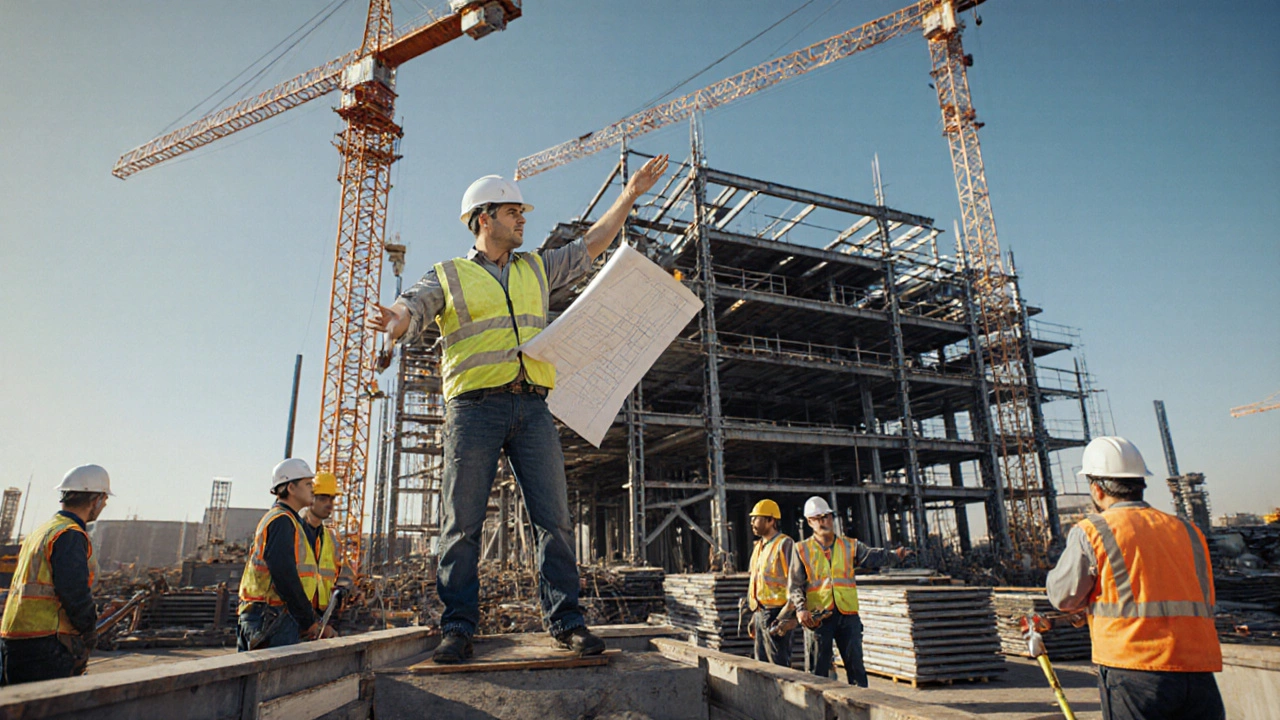General Contractor Role in Construction: Duties, Responsibilities & Benefits

When you hear the term general contractor is the primary party responsible for delivering a construction project from start to finish, coordinating labor, materials, permits, and schedules, you might imagine a lone foreman with a hard hat. In reality the role is a blend of project manager, business owner, and on‑site troubleshooter.
Core Duties of a General Contractor
A general contractor wears many hats. The most common duties include:
- Preparing detailed cost estimates and securing the project budget.
- Obtaining necessary permits and ensuring compliance with local building codes.
- Hiring, scheduling, and supervising Subcontractor is a specialized trade provider hired to perform specific tasks such as electrical, plumbing, or roofing work.
- Ordering and managing delivery of materials so that work moves smoothly.
- Maintaining a safe site, conducting daily safety briefings, and documenting any incidents.
- Communicating progress to the owner, architect, and any other stakeholders.
Think of the general contractor as the conductor of an orchestra - each musician (or trade) knows their part, but the conductor ensures they play together in time.
Coordinating Subcontractors and Trades
Subcontractors bring the specialized skills a project needs, but they don’t work in isolation. The general contractor creates a master schedule, often called a Construction Schedule is a timeline that outlines when each trade should start and finish their work, and then slots each subcontractor into the appropriate window.
Effective coordination means:
- Holding pre‑construction meetings to align expectations.
- Sharing daily updates through email or project‑management apps.
- Resolving conflicts quickly - for instance, if the plumbing crew needs wall openings before the drywall crew can start.
When a trade falls behind, the general contractor re‑sequences tasks to keep the overall timeline on track.
Working With Owners, Architects, and Engineers
The owner (or client) provides the vision and funds, while the architect translates that vision into drawings. The general contractor acts as the bridge between them.
Typical interactions include:
- Reviewing design drawings with the Architect is a professional who creates building plans and ensures they meet functional and aesthetic goals to spot constructability issues early.
- Clarifying specifications with engineers, especially when structural or MEP (mechanical, electrical, plumbing) systems are complex.
- Providing cost‑saving alternatives without compromising the design intent.
Clear, honest communication prevents costly change orders and keeps everyone aligned.

Permits, Regulations, and Safety Compliance
Every construction site must secure a Building Permit is an official approval from local authorities allowing construction to proceed according to code before work begins.
The general contractor is usually the party that:
- Prepares and submits permit applications, including plans, calculations, and fees.
- Ensures all work follows the latest OSHA (or local health‑and‑safety) regulations.
- Conducts regular inspections and maintains records for any required corrective actions.
Failure to obtain proper permits can lead to fines, delays, or even demolition of unfinished work.
Managing the Budget and Construction Schedule
Keeping money and time under control is perhaps the toughest part of the job. The general contractor tracks expenses against the original estimate and updates the owner on any variances.
Key tools include:
- Cost‑tracking software that logs invoices, change orders, and labor hours.
- Earned‑value analysis to compare planned progress with actual spend.
- Regular cash‑flow forecasts to ensure the project never runs out of funds.
When the schedule slips, the contractor may add extra crews, work overtime, or reorder tasks - all while keeping the owner informed of any additional costs.

Choosing the Right General Contractor for Your Project
Not every contractor fits every job. Here’s a quick checklist you can use:
- Licensing and insurance - verify they hold a valid contractor’s license in your county and have adequate liability coverage.
- Relevant experience - ask for examples of similar projects, especially in size and building type.
- Financial stability - a contractor who can front materials and labor costs reduces the risk of cash‑flow hiccups.
- References - speak to past owners about communication style and how issues were handled.
- Transparent contract - look for clear clauses on scope, payment schedule, warranties, and change‑order procedures.
A well‑chosen general contractor becomes a trusted partner, turning a stressful construction phase into a smoother experience.
General Contractor vs Construction Manager: Quick Comparison
| Aspect | General Contractor | Construction Manager |
|---|---|---|
| Primary contract | Direct contract with owner | Often hired by owner to oversee multiple contracts |
| Risk ownership | Assumes construction risk, warranty | Shares risk, focuses on coordination |
| Scope of work | Executes the build, hires subs | Plans, schedules, monitors performance |
| Decision authority | Can make on‑site changes within contract | Advises, but changes need owner approval |
| Typical projects | Residential, small‑to‑mid commercial | Large, complex, multi‑phased builds |
Frequently Asked Questions
What is the main difference between a general contractor and a construction manager?
A general contractor holds the construction contract and is directly responsible for delivering the build, while a construction manager is typically hired to oversee the project’s planning, coordination, and monitoring without taking on the construction risk.
Do I need a general contractor for a small home renovation?
If the renovation involves multiple trades (plumbing, electrical, structural changes) a general contractor can streamline permits, scheduling, and budgeting. For very minor cosmetic work, a single trade‑specific contractor may suffice.
How does a general contractor handle change orders?
When the owner requests a change, the general contractor prepares a written change order that outlines the scope, cost impact, and schedule adjustment. Once signed, the order becomes part of the contract and is reflected in the next invoice.
What insurance should a general contractor carry?
At minimum, they need commercial general liability (often $1‑2million), workers’ compensation for on‑site crews, and builder’s risk insurance covering materials and structures during construction.
Can a general contractor work on both residential and commercial projects?
Yes, many contractors hold licenses for both sectors. However, commercial jobs usually require additional certifications, larger crews, and more complex insurance coverages.
How is the contractor’s performance measured?
Performance is judged by on‑time completion, staying within budget, quality of workmanship, safety record, and client satisfaction. Most owners include these metrics in the contract’s performance clause.
Write a comment